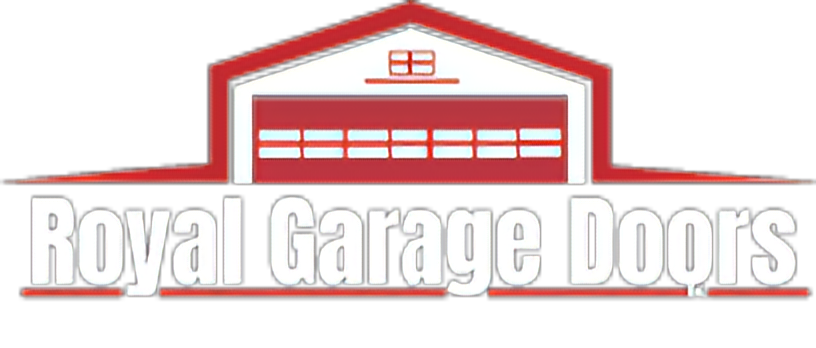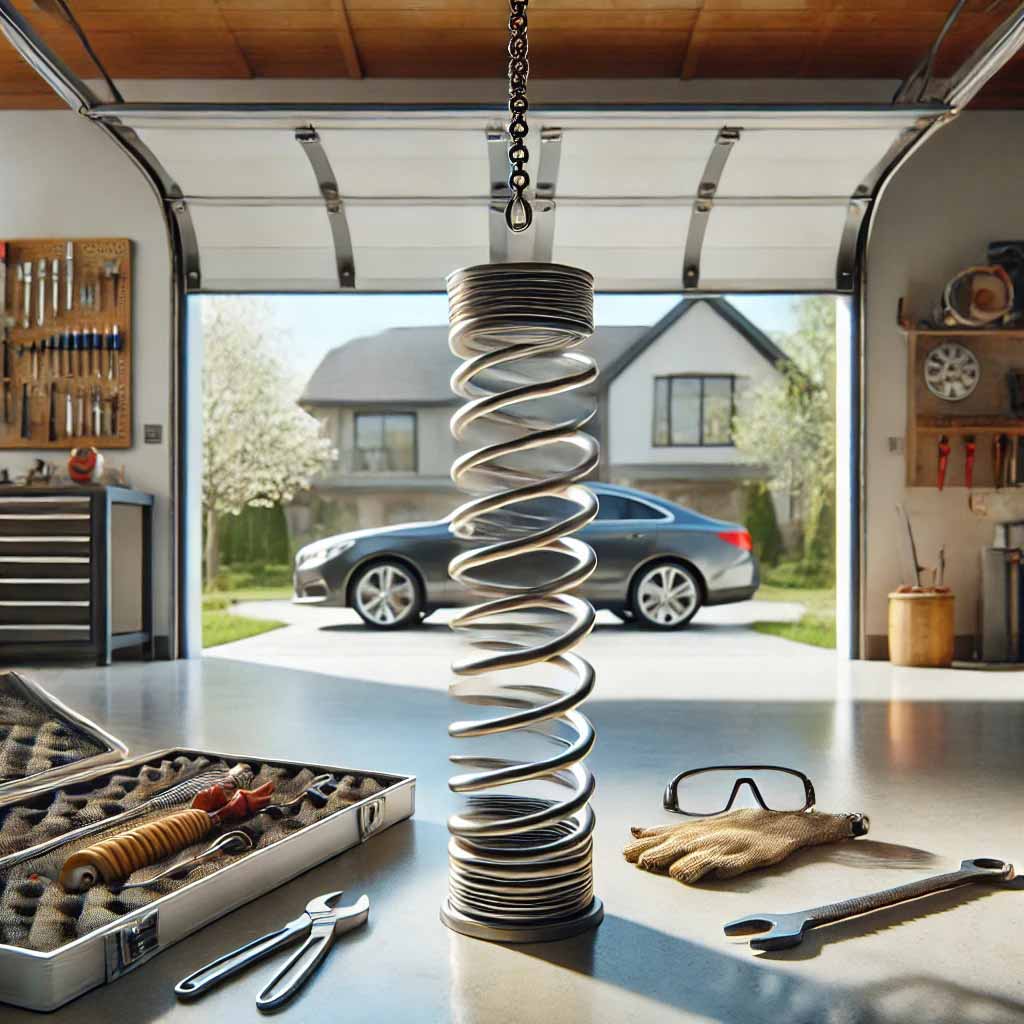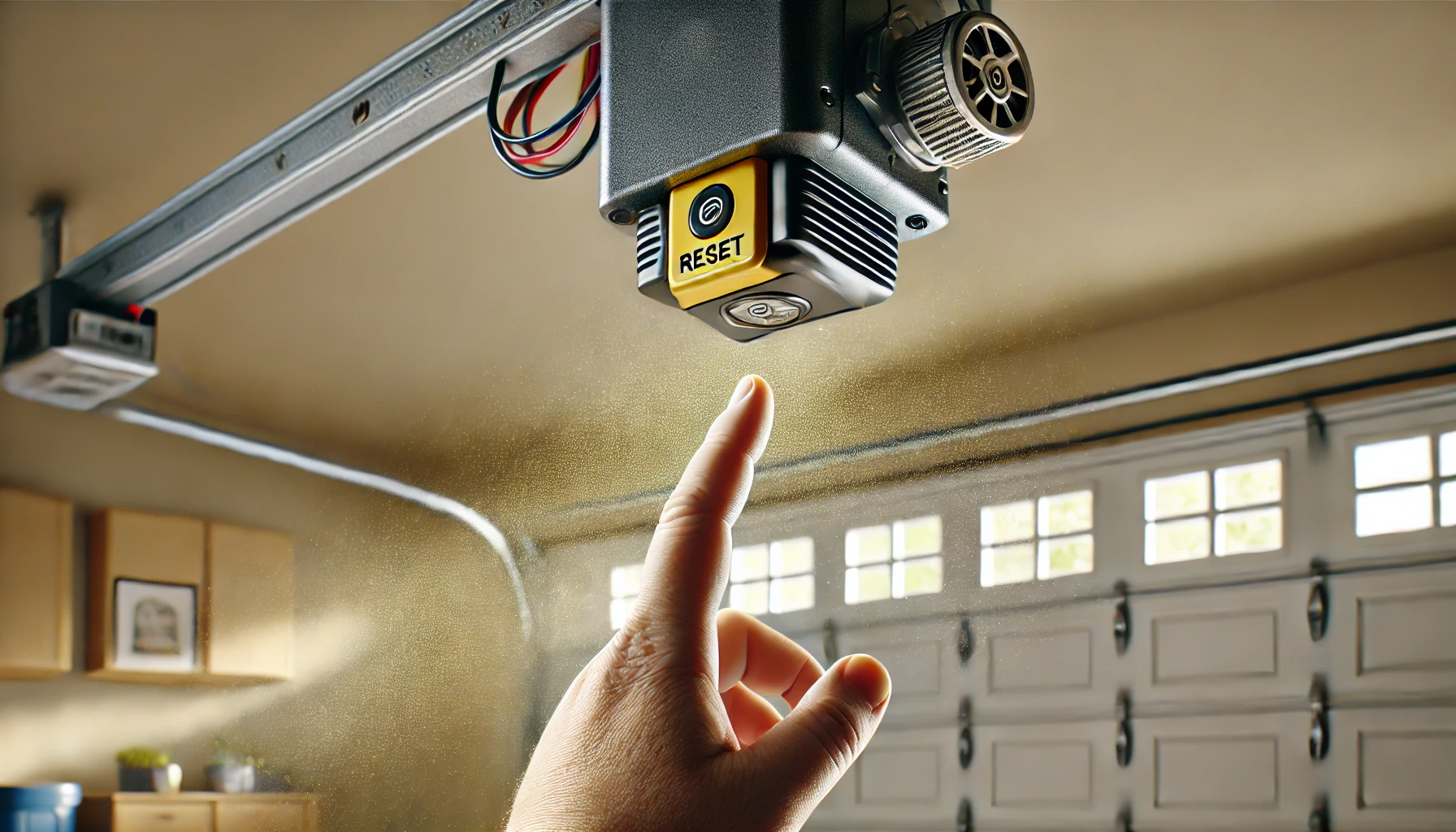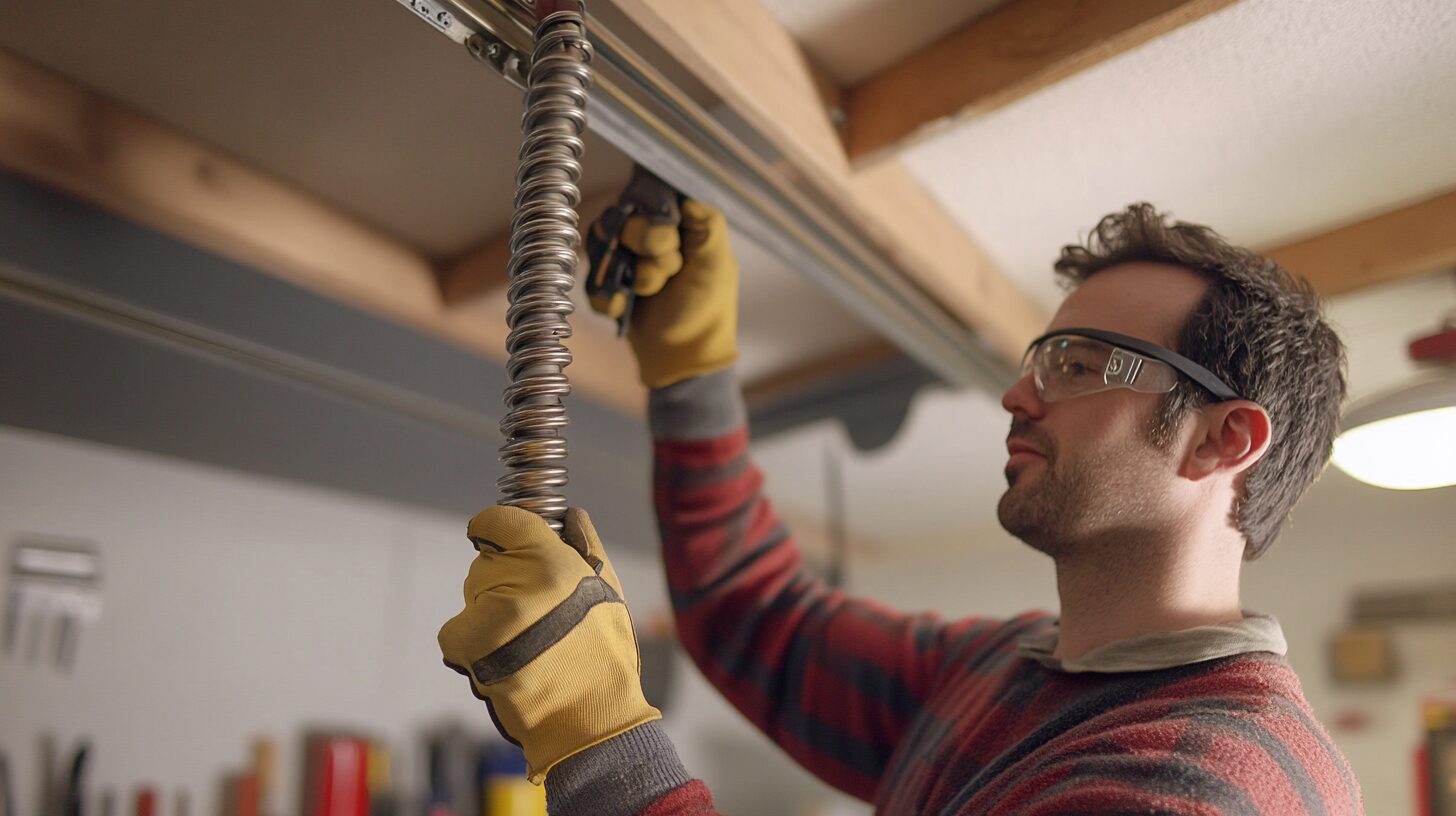Introduction
Have you ever heard a loud crash and found your garage door won’t open? That unsettling noise could be a broken garage door spring. Since garage door springs carry the heavy lifting, their failure can cause frustration and disrupt your daily routine. Understanding how these springs work and what to do when they break can save you time, money, and stress. This guide will walk you through the types of springs, warning signs of failure, and the steps you should take for safe handling.
Understanding Garage Door Springs
What Are Garage Door Springs?
Garage door springs are the essential components of your garage door system. These coiled mechanisms counterbalance the weight of the door, making it easy for your garage door opener to lift or close the door smoothly. Without these springs, your garage door would be difficult—if not impossible—to open manually due to its substantial weight.
Importance of Garage Door Springs in Operation
Without functioning springs, your garage door becomes a heavy deadweight, putting undue strain on the automatic opener and posing significant safety risks. A malfunctioning spring can lead to misaligned doors, broken cables, and potentially dangerous accidents. The stored energy in these springs is what makes the opening and closing process manageable and safe.
Types of Garage Door Springs
Torsion Springs vs. Extension Springs
There are two primary types of garage door springs:
- Torsion Springs: Positioned horizontally above the garage door, these springs twist to create the lifting force. They are more durable, offer better balance, and provide smoother door operation.
- Extension Springs: Located on either side of the door, these springs stretch to support the door’s weight. They are commonly used in older systems and are typically more affordable but may require more frequent maintenance.
Understanding which type your system uses can help you identify problems and understand the replacement process. Knowing whether you have torsion springs or extension springs installed is crucial for diagnosing issues accurately. Torsion springs, known for their durability and smooth operation, require different handling and tools compared to extension springs, which are more common in older garage doors. When a spring breaks, identifying the type can guide you on the necessary steps for repair or replacement. This knowledge also aids in communicating effectively with professionals if you decide to seek expert assistance, ensuring they bring the right tools and replacement parts. Additionally, understanding the type of springs your garage door system uses can help you plan for future maintenance and upgrades, potentially improving the longevity and performance of your garage door.
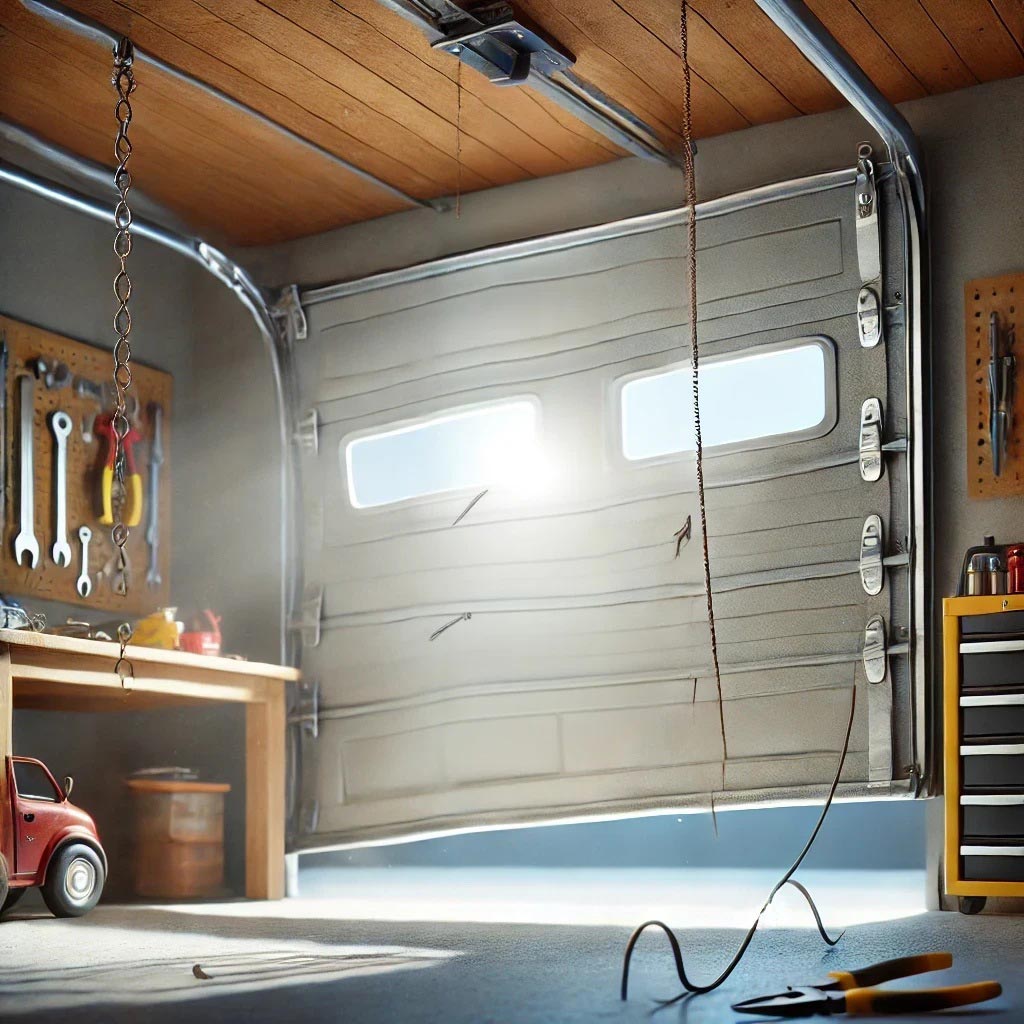
Signs of a Broken Garage Door Spring
Slack Cables or Door Hanging Unevenly
One clear sign of a broken spring is slack in the cables or a door that tilts unevenly when opening. This imbalance occurs because the spring system can no longer support the weight evenly.
Loud Crashing Noise
A loud noise that resembles a firecracker often signals the moment the spring snaps. This noise is due to the sudden release of the immense energy stored in the spring. If you hear this, stop using the garage door immediately and inspect the issue.
Why Do Garage Door Springs Break?
Wear and Tear Over Time
The average lifespan of garage door springs is around 10,000 cycles—each cycle being a full open-and-close. For households that use their garage door several times a day, this can equate to just a few years before wear sets in.
Lack of Maintenance
Proper maintenance plays a crucial role in extending the life of your springs. Regular lubrication, cleaning, and inspections for damage can help prevent sudden failures. Neglecting these tasks can lead to weakened coils and accelerated breakdown.
Rust and Corrosion
Rust can form on the spring, weakening the coil until it becomes brittle and eventually snaps. Applying garage door lubricant can help prevent moisture buildup and corrosion.
Dangers of a Broken Garage Door Spring
Risk of Heavy Lifting and Injury
A heavy garage door can weigh over 200 pounds. Without spring support, manually lifting the door can cause serious back injuries or worse. This risk is why you should avoid attempting to lift the door when a spring is broken.
Damage to the Garage Door System
Using the garage door with a broken spring can damage other components such as the torsion bar, cable drum, and even the electric garage door opener. The increased strain from compensating for the missing spring’s support can result in costly repairs.
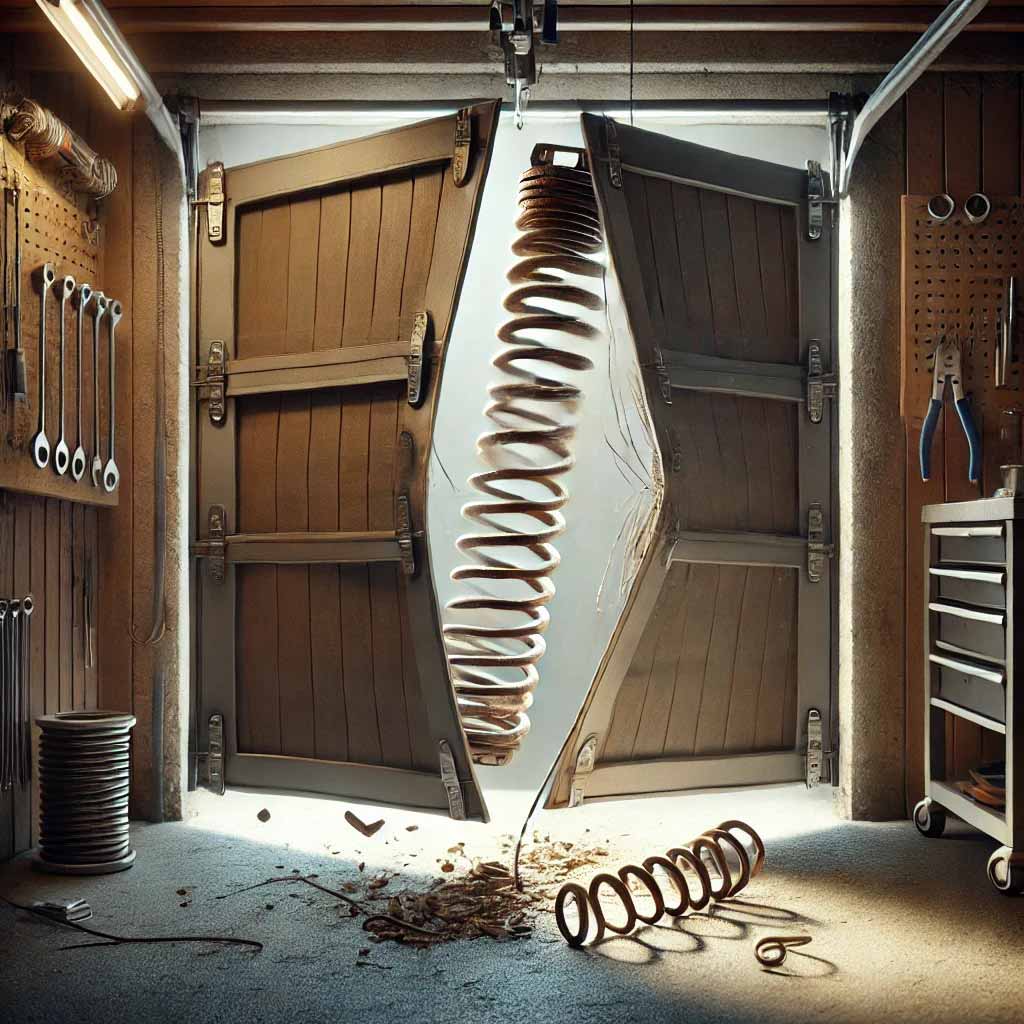
How to Identify Which Spring is Broken
Torsion Spring vs. Extension Spring Breaks
If your garage door uses two springs and only one breaks, the door may partially open but struggle to close. Extension springs often show more visible wear, with one side of the door sagging noticeably.
Checking for Slack Cables or Broken Ends
Look for slack cables hanging loosely near the frame. Additionally, a broken spring may show frayed or uneven coil ends that are visibly snapped.
What to Do When Your Garage Door Spring Breaks
Avoid Using the Garage Door
Avoid using the garage door once a spring breaks to prevent further damage. Trying to force the door open or close can lead to injuries or additional system failures.
Disengaging the Electric Garage Door Opener
To prevent stress on the garage door opener, disengage the automatic function by pulling the emergency release handle. This allows the door to be moved manually without causing additional strain on the motor.
Steps for Garage Door Spring Replacement
Necessary Tools and Safety Gear
Replacing a spring requires proper tools such as winding bars, a tape measure, protective gloves, and safety goggles. Safety is crucial, as torsion springs store immense energy that can be dangerous if handled incorrectly.
Step-by-Step Replacement Process
- Disconnect the automatic opener.
- Secure the door in place with clamps to prevent sudden movement.
- Loosen the set screws on the torsion bar carefully.
- Unwind the old spring using winding bars, releasing tension slowly and safely.
- Install the new springs and adjust the spring tension according to the manufacturer’s specifications.
When to Call a Professional
Complex Repairs Requiring Expertise
If you’re unsure about handling a spring replacement, it’s safer to hire a professional. Incorrect adjustments can lead to dangerous malfunctions or further damage to the garage door system.
Professionals have the experience and specialized tools needed to ensure the job is done correctly and safely. They can quickly identify the type of springs your system uses, whether torsion or extension, and bring the appropriate replacement springs.
This expertise minimizes the risk of injury or additional damage to the garage door, which can occur if the springs are not handled with care. Additionally, professionals can offer valuable guidance on maintaining your springs, providing tips on lubrication and regular inspections to prevent future issues.
Preventing Further Damage
Professionals ensure that the garage door system is calibrated properly, preventing excessive strain on the cable drum, center bracket, and safety cables.
A well-calibrated system not only functions smoothly but also extends the lifespan of the entire setup, reducing the likelihood of costly repairs in the future. By addressing minor issues during a professional inspection, you can avoid more significant problems down the line, such as misaligned doors or worn-out components.
Moreover, experts can advise on potential upgrades or enhancements to your system, such as installing more durable torsion springs or adding safety features like safety cables to extension spring systems.
This proactive approach ensures that your garage door remains reliable and efficient, providing peace of mind and enhancing the safety of your home. Regular professional maintenance checks can catch early signs of wear and tear, allowing for timely interventions that keep your garage door in optimal condition.
Cost of Garage Door Spring Replacement
Factors Influencing the Price
The cost of replacing garage door springs depends on the type of spring, local labor rates, and whether both springs require replacement.
Cost of Parts and Labor
On average, replacing standard torsion springs costs between $150 to $350, depending on the spring’s quality, size, and the complexity of the installation.
Tips for Preventing Future Breakages
Regular Garage Door Maintenance
Conduct regular inspections of your garage door system to detect signs of wear early. Check the spring ends, torsion tube, and safety cables for abnormalities.
Lubricating Garage Door Springs
Use a high-quality garage door lubricant on the coils to prevent rust and ensure smooth operation. Applying lubricant twice a year—especially before winter—can significantly extend the lifespan of your springs.
Essential Information on Garage Door Spring Repairs
When and How to Handle Garage Door Spring Repairs
Garage door spring repair is an essential service to ensure your garage door operates smoothly. Most garage doors rely on either torsion or extension springs, with older garage doors often having different configurations that may require specialized handling. If you hear a loud crashing sound, it’s likely that one spring has snapped, leaving the remaining spring under additional strain.
When one spring breaks, trying to lift the heavy door manually can be dangerous. Instead, check for signs such as hanging slack cables or an unbalanced system. If you see an unbroken spring that appears overstretched, this is a sign that replacement springs may be necessary to avoid a complete system failure.
Proper Maintenance for Garage Door Springs
Performing proper maintenance is key to preventing issues before they start. Regular lubrication and inspections can extend the lifespan of your springs. If you notice that just one spring is wearing out, it’s advisable to replace both to maintain balance. Additionally, for specific garage door models, professional adjustments are often required to keep the springs properly aligned.
Upgrading to a New System
If you’re installing a new garage door, make sure the springs are rated for the door’s weight to avoid stress on the components. Modern systems often come with improved torsion springs that last longer and require less frequent replacements.
Final Thoughts on Repairs and Replacements
Recognizing the signs of wear—like uneven movement, loud noises, or slack cables—and scheduling timely repairs can save you from costly emergencies. In summary, keeping an eye on the condition of your springs and scheduling prompt garage door spring repair ensures your door remains safe, reliable, and functional.
Is It Safe to Use a Garage Door with a Broken Spring?
No, it is not safe to use a garage door with a broken spring. Attempting to operate the door can lead to further damage to the garage door system and cause serious injuries due to the increased weight. A heavy door can fall unexpectedly if the remaining spring fails, making it a significant safety hazard.
What is the Average Cost to Replace a Spring on a Garage Door?
Replacing a garage door spring typically costs between $150 and $350. This price varies based on the spring type, local labor charges, and whether you need to replace both springs. For older garage doors, additional adjustments may be necessary, which can increase costs. Torsion springs are generally more expensive than extension springs but last longer.
How to Open a Garage Door that Has a Broken Spring?
If you must open the garage door manually when the spring is broken, ensure safety first. Disengage the automatic opener by pulling the release handle. Then, with assistance, lift the door evenly while being cautious of its weight. This process can be dangerous with a heavy door, so it’s advisable to seek professional help.
How to Tell if a Garage Door Spring is Broken?
A broken spring is usually indicated by a loud crashing sound when it snaps. You may also notice hanging slack cables, uneven door alignment, or a door that refuses to open. Check for visible breaks in the spring coil or frayed ends. If the unbroken spring appears overstretched or the door struggles to stay open, it is a clear sign that the spring system needs attention.
By addressing these concerns and performing proper maintenance, you can ensure the longevity and safety of your garage door system.
Top Causes of Broken Garage Door Springs
Understanding the primary reasons behind broken garage door springs can help in preventing unexpected failures and prolonging their lifespan. Here are the top causes:
- Wear and Tear: The most common reason for spring failure is simple wear and tear. Each time your garage door opens and closes, the springs undergo a cycle. Over time, these cycles add up, and the springs can only handle so many before they start to weaken and eventually break. Most garage door springs are rated for about 10,000 cycles, which can translate to several years of daily use.
- Lack of Maintenance: Regular maintenance, such as applying garage door lubricant and checking for signs of wear, is crucial. Without proper maintenance, springs can become rusty or lose their tension, leading to premature failure. Ensuring the door is adjusted properly and lubricated can significantly extend the life of the springs.
- Rust and Corrosion: Rust is another enemy of garage door springs. Corrosion can weaken the spring coils, making them more susceptible to breaking. Using a high-quality garage door lubricant can help prevent rust and keep the springs functioning smoothly.
- Improper Installation: If the springs are not installed correctly, they may not distribute the door’s weight evenly, leading to increased stress and a higher likelihood of breaking. This is why it’s important to have a professional handle the installation and ensure that everything is set up correctly.
- Extreme Temperatures: Both cold and hot temperatures can affect the metal in garage door springs. In colder climates, springs may become brittle and more prone to snapping, while extreme heat can cause them to expand and lose tension.
- Unbalanced Door: If the garage door is not balanced properly, it can put extra strain on the springs. An unbalanced door may require more force to lift, causing the springs to wear out faster than they normally would.
By understanding these causes and taking proactive measures, such as regular maintenance and professional inspections, you can help prevent your garage door springs from breaking prematurely.
How long do garage door springs last?
Garage door springs typically last between 7 and 12 years, depending on usage and maintenance. Most garage door springs are rated for around 10,000 cycles, which means each complete opening and closing of the door counts as one cycle.
If your garage door opens and closes multiple times a day, the lifespan of the springs will be shorter. Regular maintenance, such as lubricating the springs and checking for wear and tear, can help extend their lifespan.
Additionally, factors like climate, quality of the springs, and proper installation can also influence how long they last. Ensuring your garage door system is adjusted properly and performing routine inspections can maximize the longevity of your springs.
